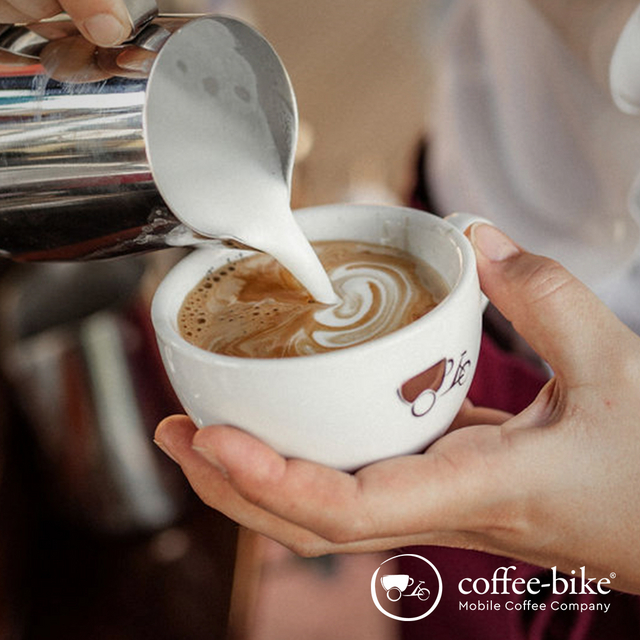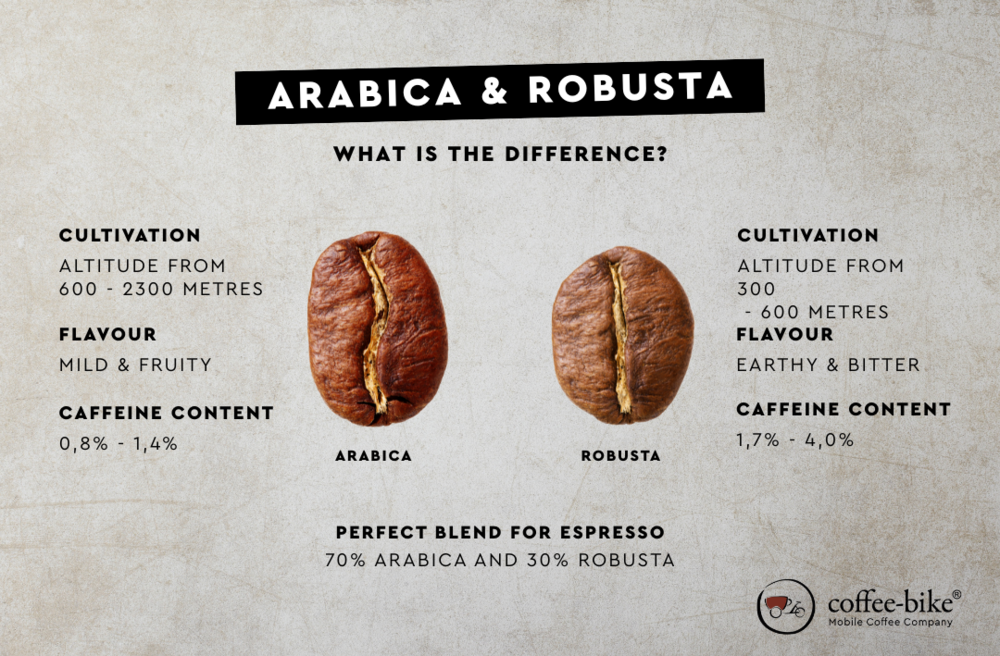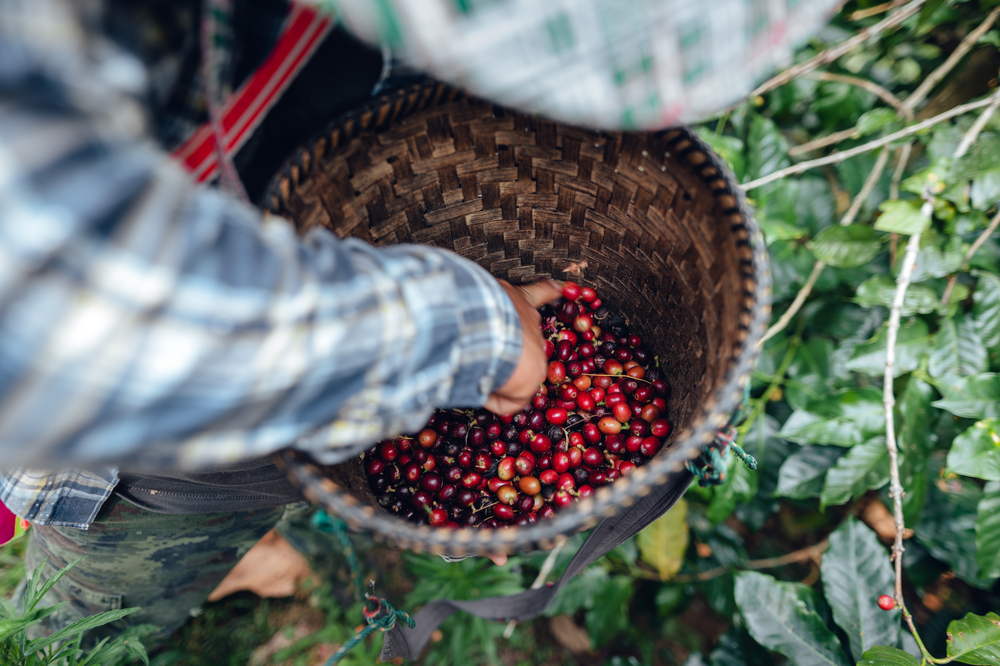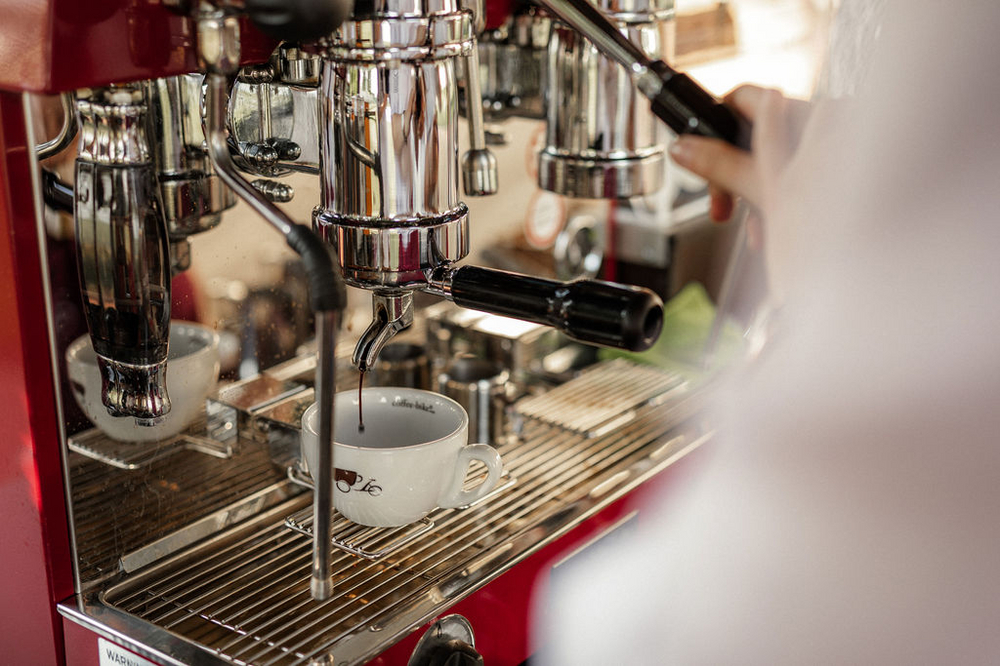If anyone knows what good coffee tastes like, it's Sönke. He has been a barista at Coffee-Bike, our coffee bar for events, for over seven years and has accompanied many catering events during this time. Whether weddings, company parties or trade fairs, Sönke not only makes delicious coffee drinks, but also has a wealth of knowledge about the little beans. Today he talks to us about one of the most exciting topics in the coffee world: the difference between Arabica and Robusta.
Arabica vs. Robusta - the difference
12.06.2025 | Coffee know-how
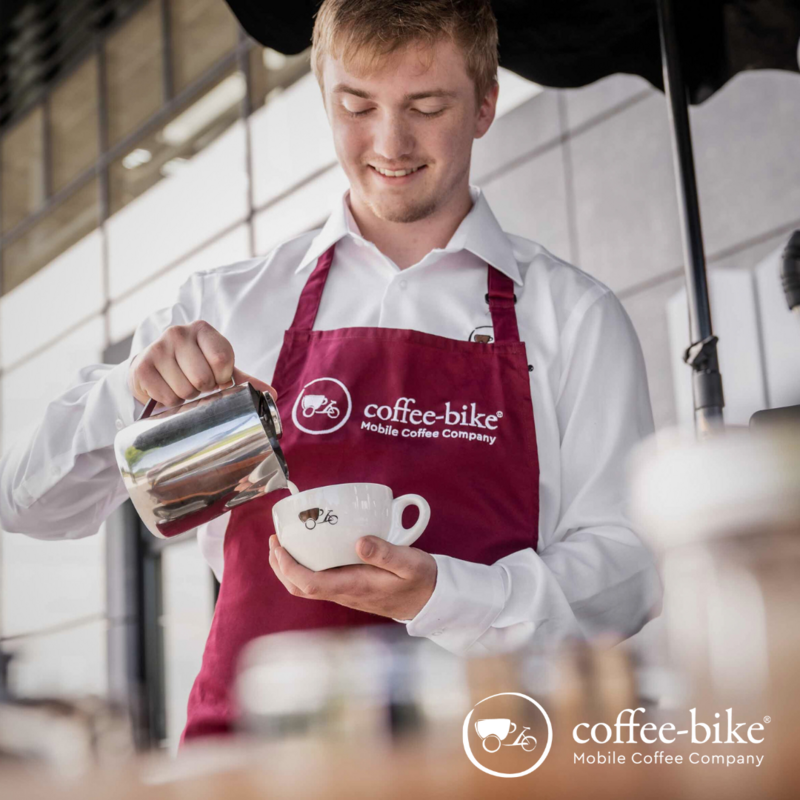
Robusta or Arabica? Who wins the race?
Arabica or Robusta, which bean is better? Many coffee lovers ask themselves this question when looking at the packaging. It's not necessarily a race, but rather a question of flavour, preparation and personal caffeine requirements. Arabica is regarded as more refined and fine, Robusta as strong and intense. But both varieties have their advantages and Sönke knows them inside out.
What is the difference between the coffee beans?
Sönke: "Arabica and Robusta differ on many levels."
Cultivation: Arabica vs. Robusta
"Arabica coffee places high demands on its cultivation conditions. The plants only thrive at altitudes of between 600 and 2,300 metres; the higher the growing area, the slower the coffee cherries ripen, which benefits their flavour. As the harvest is done by hand, the effort involved is considerable: it takes a lot of time and labour. This effort is ultimately reflected in the price for the end consumer.
Robusta lives up to its name: cultivation is considered less complicated and less care-intensive. The plants thrive at lower altitudes of between 300 and 600 metres and are resistant to weather extremes, pests and intense sunlight. They also produce higher yields, as they can be harvested several times a year with significantly less effort than Arabica."
Appearance of the coffee beans
"The beans can already be distinguished from each other by their appearance. Both varieties vary significantly in size and shape, a difference that can be recognised even without technical aids. Robusta beans are usually smaller, rounder and appear rather plain and uniform in shape. How do I recognise Arabica coffee? Arabica beans, on the other hand, are usually larger, flatter and oval, with a characteristic ‘S’ notch along the long side."
Ingredients and flavour
"Arabica and Robusta beans also differ significantly in taste: Arabica impresses with a mild, fruity aroma and a fine acidity, while Robusta tastes much stronger, earthier and more bitter. There are also major differences in the caffeine content. Robusta contains 1.7 to 4.0 % caffeine, around twice to three times as much as Arabica, which only contains between 0.8 and 1.4 %. This is also noticeable in the effect. Robusta really wakes you up!"
Are you planning an event and looking for the perfect caffeine kick this summer? Then you can hire the Coffee-Bike flexibly, just use our event planner and get your personalised quote!
Why are Arabica beans higher quality?
Sönke: "Arabica coffee is considered to be of higher quality because it has a more complex flavour and often offers a more multi-layered aroma. Many coffee connoisseurs appreciate the fine, floral and fruity notes that Arabica brings. It is also more expensive to grow because the plant is more sensitive and often grows in regions that are difficult to access. This means more manual labour, careful harvesting and longer ripening times. All factors that increase the price and quality requirements."
Did you know that our Caferino organic coffee beans are made from 100% premium Arabica beans? The beans with character retain their velvety, balanced flavour thanks to the long-term roasting process, which coffee lovers particularly appreciate.
Coffee beans - preparation of Arabica and Robusta
How do the differences between Arabica and Robusta affect preparation? Depending on the bean, not only the flavour and aroma change, but also the technique and equipment. Sönke explains what really matters when it comes to preparation and why the choice of bean is particularly important for espresso.
Roasting - why Arabica and Robusta are roasted differently
Arabica and Robusta differ not only in flavour, but also in roasting. Arabica beans prefer to be roasted slowly and evenly at moderate temperatures. This is the best way to develop their complex, fruity and floral flavours. Robusta, on the other hand, needs more heat and a slightly shorter roasting time to round off its bitter notes and emphasise its earthy, chocolaty aromas.
Sönke: "Roasting is almost a science in itself. Arabica is more sensitive. If you give it too much heat, it loses its fine flavours. Robusta, on the other hand, can withstand high temperatures. Roasters use this to give Robusta depth without it tasting too harsh. If you process both beans in a blend, you have to find the happy medium when roasting. This is real manual labour."
Good coffee - What does the Robusta bean taste like?
Sönke: "Robusta beans have a strong, often earthy flavour. They are less acidic than Arabica and tend to have bitter, nutty and sometimes chocolaty flavours. For many coffee drinkers, this is the “strong coffee” that really wakes you up in the morning. Those who like an intense, distinctive flavour will buy and appreciate Robusta coffee. Especially in the short, concentrated preparation. Robusta is rather rare for filter coffee. It is important that the bean is well roasted and freshly processed, then Robusta can also really impress."
Which is the best coffee bean for the portafilter? Arabica or Robusta?
Sönke: "An Arabica Robusta blend works particularly well in the portafilter. Arabica provides the complex flavour, Robusta brings the necessary power and a great crema to the espresso. The combination is simply perfect - strong, aromatic and full-bodied. At Coffee-Bike, we use precisely this blend for our coffee: 70% Arabica and 30% Robusta. This blend also works perfectly for cappuccino and latte macchiato."
Do you already know the coffee trends for 2025? Which coffee is on trend?
Robusta for espresso - flavour and crema
Attention espresso lovers: If you are looking for a strong cup with a dense crema, you should not underestimate Robusta. This bean is perfect for making espresso, not least because of its special ingredients and full texture. Sönke reveals why Robusta is a real crema champion and which varieties are worthwhile.
What types of Robusta coffee are there?
Sönke: "Robusta is not just Robusta. There are many different varieties and growing regions. The best-known type is Coffea Canephora, which is grown in Africa, Asia and South America. Robusta coffee was discovered in Africa in the 19th century and is now the second most important type of coffee in the world after Arabica. With around 30% of global coffee production, it plays an important role on the world market."
Arabica and Robusta coffee - a good blend?
Sönke: "Absolutely! Many of the best espresso blends consist of a combination of both varieties. Arabica brings fruitiness, acidity and fine flavours, while Robusta adds strength, body and a stable crema. The blend makes the coffee balanced and multi-layered. A real pleasure. Our certified organic Caferino espresso beans are a blend of 70% Arabica and 30% Robusta. The result is a high-quality coffee that impresses both in terms of flavour and appearance. As a barista, I can say that this combination is very popular with our guests."
Would you like to have really good coffee for your next event? Then our Coffee-Bike, our rolling coffee bar, is just the thing for you!
Conclusion: Which is better, Robusta or Arabica?
The right answer is: it depends! Both beans have their strengths and it's the combination that creates a coffee that is balanced, aromatic and full of character.
Barista Sönke puts it in a nutshell: ‘The blend of Arabica and Robusta beans is like a good team, each brings something different and together they are unbeatable.’ If you enjoy your latte macchiato on a Coffee-Bike at your next event, you now know what's in your cup and why this coffee speciality tastes so good.
These articles might intrest you:


